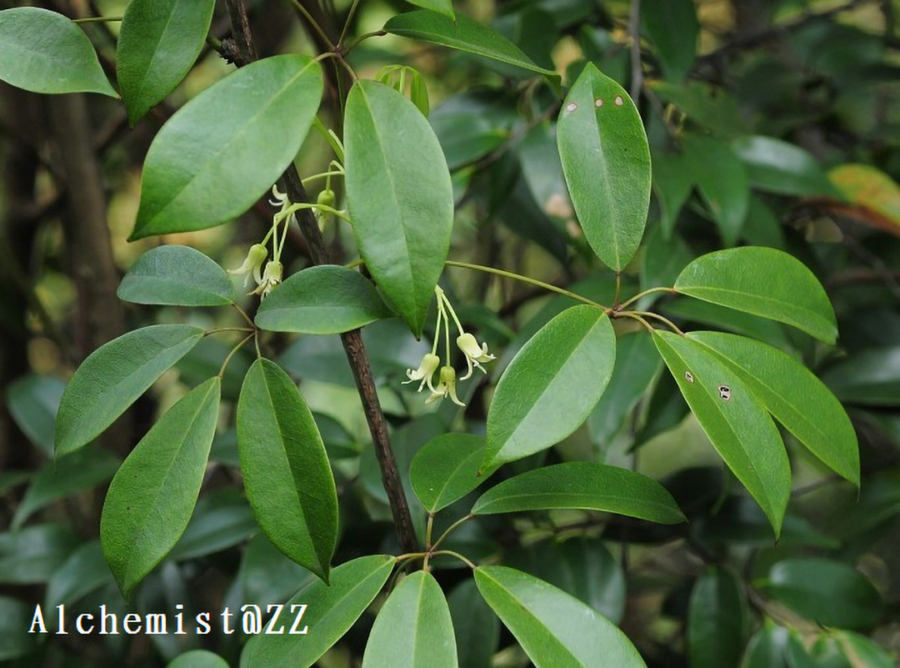- Scientific Name: Stauntonia leucantha Diels ex Wu
- Ref: Notizbl. Bot. Gart. Berlin-Dahlem. 13:373. 1936
- Chinese Common Name: 钝药野木瓜 dùnyào yě∙mùguā
- Family: Lardizabalaceae
- Genus: Stauntonia
- Distribution: Open to dense forests, forest margins on mountain slopes, by streams along valleys; 300–1000 m. Anhui, Fujian, Guangdong, Guangxi, Guizhou, Jiangsu, Jiangxi, Sichuan, Zhejiang.
- Photo: 04/13/2013, Mt. Siming, Zhejiang
Monoecious. Branchlets grayish brown when dry, 3--4 mm in diam., striate. Leaves fascicled; petiole 4--6 cm; leaf blade palmately 5--7-foliolate; petiolules 0.7--2 cm, central one longest; leaflets oblong-obovate, subelliptic, or oblong, 5--7(--9) × 2--3 cm, subleathery, membranous when young, abaxially farinose green but yellowish green when dry, adaxially dark green but grayish olive-green when dry, base subrounded to obtuse, apex acute to sometimes acuminate; primary veins 3, secondary veins 5--7 pairs; tertiary veinlets and secondary veins abaxially slightly prominent and adaxially impressed. Racemes 2 to several; bracts persistent; peduncle slender; bracteoles linear-lanceolate, ca. 4 mm. Sepals subfleshy; outer 3 sepals narrowly linear, 8.5--9 × 0.8--1 mm. Male flowers: stamens 5.5--6 mm; filaments 3.5--4 mm, connate into a slender tube but apically slightly free; anthers unequal in length, free, straight; connective apically unappendaged. Pistillodes filiform. Female flowers: staminodes scalelike, ca. 0.2 mm in diam. Carpels ovoid-terete, ca. 4 mm. Stigma subcapitate. Fruit yellow at maturity, black when dry, oblong, ca. 7 × 4 × 3 cm, smooth or inconspicuously tuberculate, slightly narrowed at both ends. Fl. Apr--May, fr. Aug--Oct. (Flora of China)
